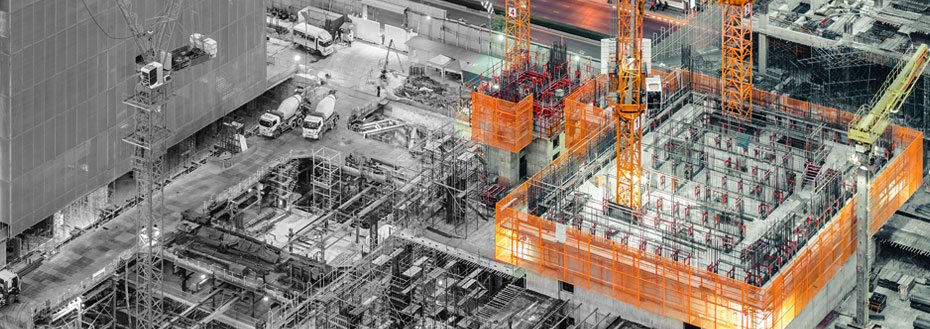The landscape of infrastructure bim services has evolved dramatically with the integration of Building Information Modeling (BIM) services. BIM isn’t merely a tool; it’s a transformative force reshaping how infrastructure projects are conceptualized, designed, and executed.
Revolutionizing Infrastructure Planning
BIM services have revolutionized the planning phase of infrastructure projects. By creating detailed 3D models that incorporate architectural, structural, and MEP (Mechanical, Electrical, Plumbing) elements, BIM enables stakeholders to visualize the entire project, identify potential clashes, and make informed decisions before construction begins.
Enhancing Collaboration and Communication
One of the primary strengths of BIM lies in fostering collaboration among multidisciplinary teams. It serves as a common platform where architects, engineers, contractors, and other stakeholders can collaborate in real-time, exchange ideas, and resolve design conflicts efficiently.
Streamlining Design and Construction
The utilization of BIM services streamlines the design and construction phases. It enables precise coordination, minimizes errors, and allows for better project sequencing, leading to enhanced efficiency and cost savings throughout the project lifecycle.
Improving Project Lifecycle Management
BIM isn’t confined to the construction phase alone. It continues to add value throughout the project lifecycle. From initial design to facility management post-construction, BIM serves as a comprehensive database, storing valuable information that aids in maintenance and future renovations.
Cost and Time Efficiency
Implementing BIM services results in significant cost and time savings. The ability to identify clashes or discrepancies in the design phase prevents costly rework during construction. Additionally, streamlined workflows and enhanced project coordination reduce project timelines.
Enhanced Sustainability and Risk Mitigation
BIM plays a pivotal role in enhancing sustainability in infrastructure bim services development. By analyzing energy consumption, material usage, and environmental impact within the virtual model, it allows for the implementation of more sustainable design choices. Moreover, BIM aids in identifying and mitigating potential risks early in the project lifecycle.
Technology Integration and Future Prospects
The integration of BIM with emerging technologies like AI (Artificial Intelligence) and IoT (Internet of Things) opens new frontiers in infrastructure development. Predictive analytics, automated workflows, and smart infrastructure design are on the horizon, promising further advancements in the industry.
Industry Adoption and Challenges
While BIM adoption has seen significant growth, challenges persist, including initial investment costs, interoperability among different software platforms, and skill gaps within the workforce. Addressing these challenges is crucial to maximizing the potential of BIM in infrastructure development.
Future Outlook and Opportunities
The future of BIM in infrastructure development is promising. Continued technological advancements, improved collaboration, and addressing industry challenges will lead to more widespread adoption and further innovations in the field.
Integration with Smart Cities
BIM’s integration with the concept of smart cities marks a significant advancement in urban planning and infrastructure development. By incorporating BIM data into the larger framework of smart city initiatives, cities can optimize resource management, enhance sustainability, and improve overall quality of life for residents.
Reshaping Urban Infrastructure
The impact of BIM services extends beyond individual projects to reshaping entire urban landscapes. From transportation networks to water supply systems, BIM facilitates holistic planning, enabling cities to create more efficient, interconnected, and resilient infrastructure bim services.
Data-Driven Decision Making
BIM’s ability to collect and analyze vast amounts of data allows for data-driven decision-making throughout the infrastructure lifecycle. From optimizing maintenance schedules to predicting future infrastructure needs, data analysis empowers stakeholders to make informed choices for better project outcomes.
Inclusivity and Accessibility
BIM’s visualization capabilities promote inclusivity and accessibility in infrastructure development. Stakeholders, including policymakers, planners, and citizens, can engage with interactive models to understand and contribute to the planning process, fostering a more inclusive approach to infrastructure development.
Regulatory and Policy Implications
The widespread adoption of BIM has led to regulatory changes and policy adaptations in the construction and infrastructure sectors. Governments worldwide are recognizing the potential of BIM and implementing mandates or incentives to encourage its use, further accelerating its integration into industry practices.
Global Collaboration and Standardization
Standardization efforts in BIM have facilitated global collaboration among various stakeholders. Initiatives to standardize BIM practices and data formats enable seamless collaboration on international projects, promoting consistency and interoperability across borders.
Skill Development and Education
The demand for BIM-related skills has surged in the infrastructure sector. Educational institutions and training programs are adapting to this need, offering specialized courses and certifications in BIM technologies to equip the workforce with the necessary skills for the industry’s digital transformation.
Environmental and Social Impact Assessment
BIM’s capabilities extend to environmental and social impact assessments of infrastructure projects. Its simulation and analysis tools enable stakeholders to assess the potential ecological and social consequences, aiding in the development of more sustainable and socially responsible infrastructure bim services solutions.
Adoption Challenges and Future Trends
While the benefits of BIM in infrastructure development are vast, challenges such as interoperability issues, data security concerns, and the need for industry-wide collaboration persist. Looking ahead, advancements in AI, machine learning, and cloud-based technologies are expected to address these challenges and drive further innovation in the field.
Conclusion
The integration of BIM services in infrastructure bim services development signifies a paradigm shift in how projects are conceived, designed, and executed. ENGISOFT ENGINEERING – BIM Staffing & BIM Services Its transformative power lies not only in enhancing efficiency, cost-effectiveness, and sustainability but also in fostering collaboration and innovation across the industry.As technology continues to evolve, the potential for BIM to revolutionize infrastructure development remains vast. Embracing this transformative tool is pivotal for stakeholders aiming to navigate the ever-changing landscape of infrastructure development.

